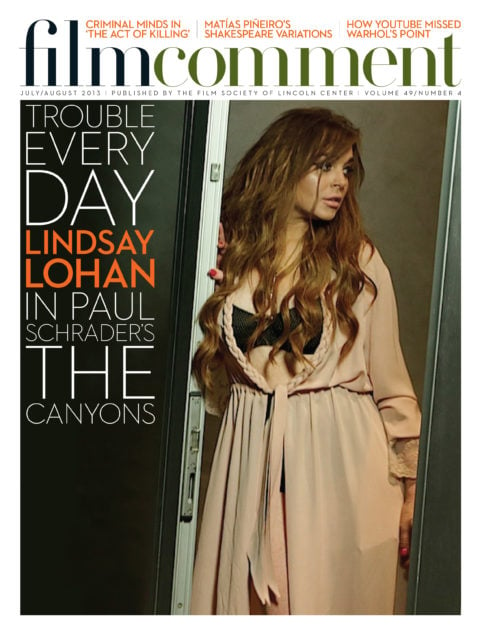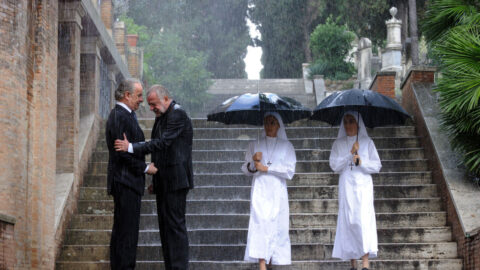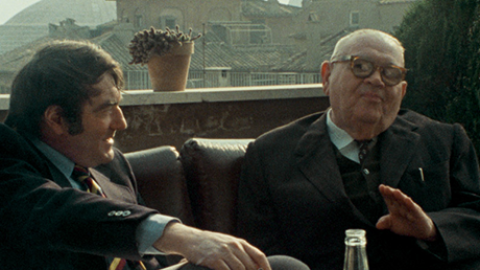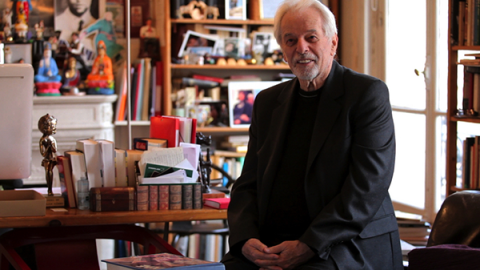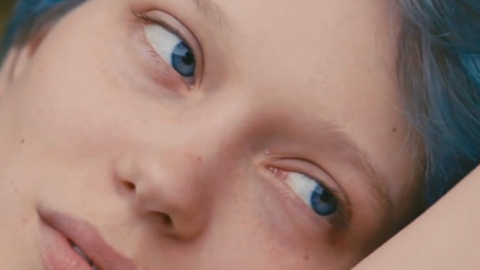Rain and sex, that’s what Cannes 2013 was made of. The rain made the red carpet squish, ruining many pairs of $4,000 shoes. “This model is very good for the bad weather,” said a saleswoman at a Croisette boutique, plucking from the display a Swarovski-crystal–covered satin ankle boot with a discreetly placed price sticker of €3,600—nearly a quarter more than the combined cost of my hotel and airfare. “I’ll think about it,” I said with a smile as I backed out the door. The shoes would have been the perfect bling to flash at the security guards who double as red-carpet fashion police at the evening galas and who seem unaware that Yves Saint Laurent became the most influential designer of the second half of the 20th century by putting women in pants day and night.
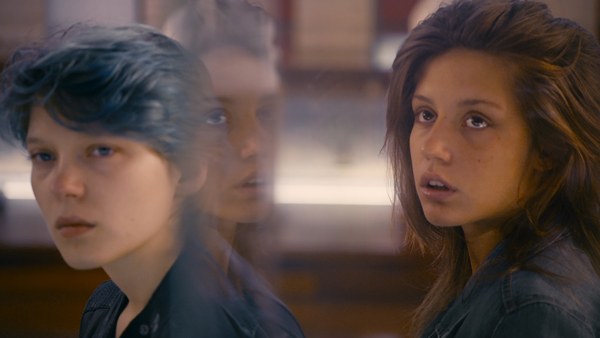
Blue Is the Warmest Color
“Who wears the pants—or doesn’t?” could be the headline for the fracas that developed around the Palme d’Or winner, Abdellatif Kechiche’s Blue Is the Warmest Color (aka La Vie d’Adèle–Chapitres 1 et 2). Embraced by the international press and the jury as well, the movie is a coming-of-age lesbian love story about the titular Adèle (Adèle Exarchopoulos), a high-school student from a working-class family who falls in love at first sight with Emma (Léa Seydoux), an art-school grad student from an upper-middle-class boho family. The seductively lit but dim-witted saga was not a minute underway when an oddly positioned camera angle set off a warning light in my feminist brain, even as I was trying to not remind myself that Kechiche was also the director of that voyeuristic 2010 wallow in female abjection, Black Venus. Why, I wondered, in a shot that introduces the central character as she walks to school, is the focal point her ass? True, it is a lovely ass, even in a nondescript skirt, and we soon see more of it, and still more again. In a sequence in which Adèle is sleeping naked, the camera hovers over her upended rump, lovingly examining its gravity-defying curves and rose-gold flesh. After about 90 minutes of such foreplay, we get to the pièce de résistance, a prolonged love scene (estimates of its length ranged anywhere from seven minutes to 20) involving much kissing, tonguing, fingering, scissoring, rapt eyes, hungry lips, and of course, multiple orgasms. (I believe this is the climax of Chapter 1.) The scene was received by the majority of critics as if it was a revelation, and by some as if the sex was real. Seydoux put the latter misperception to rest when she explained that she and her co-star wore prosthetic vaginas to protect their modesty. While much pasta is scarfed down in the dinner scenes at which the director excels, no pussy is actually eaten.
The actors deserve credit for playing their characters with such conviction. The problem is that very little about the way Kechiche has conceived these characters rings true. Julie Maroh, the creator of the graphic novel from which the films was, according to the credits, “freely adapted,” wrote in a well-reasoned (and viciously attacked) entry on her blog that what was missing was the presence of lesbians on the set to advise on how to handle the sex. I would go further: what is missing are recognizable contemporary young women, regardless of their sexual preference. More than 40 years of struggle over the representation of women seems to have made no impression on Kechiche. (The same may be true of other directors, but they have not deigned or dared to walk into such a minefield.) In one stunningly obtuse scene, Adèle and Emma pay a visit to a museum where they smile and laugh in appreciation while looking at neoclassical sculptures of female torsos, as if they were seeing themselves. I can’t imagine a female art-school student today looking at such a sculpture without a trace of irony—without posing the question: through whose eyes am I looking? Who determined that the definition of beauty in art is to be found in these male representations of women? Of the sex scenes in Blue, Kechiche said that he wanted them to look like classical paintings. He also said, with a similarly stunning lack of awareness, that the film is couched in Adèle’s subjectivity. Even Jean-Luc Godard, the most dedicated of ass men—“A woman is her ass,” he once remarked, although I doubt he’d venture as much today—did not confuse his POV with that of the women he captured with his lens.
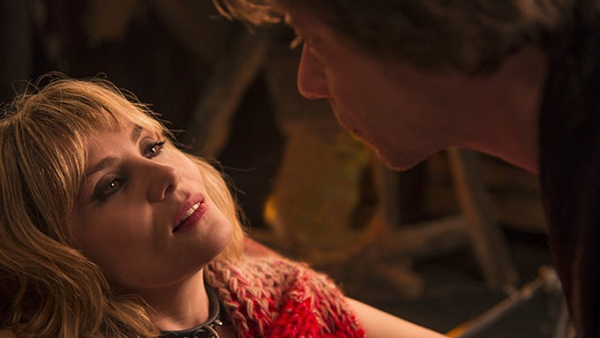
Venus in Fur
Maybe the lesson here is that male directors who focus on female sexuality should not run their mouths off at Cannes. The sputtering was so loud that daily updates from the Lars von Trier promo machine in the Market, which promised “one photo and one chapter heading a day” from the director’s forthcoming Nymphomaniac, went unnoticed. We had Roman Polanski, whose Venus in Fur, until its grandiose ending, is an excellent showcase for the comic dexterity of Emmanuelle Seigner, railing that “the pill has masculinized women.” And worse, François Ozon, director of Young & Beautiful, which depicts a high-school senior “exploring” her desire by becoming a prostitute, tried to justify his absurd movie by claiming that “many women fantasize about being prostitutes” (except, I guess, the ones who actually have to do it for a living). Ozon incurred the wrath of FEMEN, the international women’s protest organization, and several high-placed female government officials including Socialist Party spokesperson, Laurence Rossignol, who wrote that Ozon should “avoid assigning his fantasies to us,” and Minister of Women’s Rights Najat Vallaud-Belkacem, who implicitly criticized the festival itself by saying that “it is also important that we hear the voices of women directors because women’s views of women are not at all the same as those of men.” Last year there were zero movies directed by women in Competition; this year there was one, A Castle in Italy, from Valeria Bruni-Tedeschi, whose two previous films It’s Easier for a Camel… (03) and Actresses (07) are as emotionally volatile and wildly funny as she herself is as a performer. Blatantly autobiographical, A Castle in Italy lacks the tonal control of her earlier films; in unlocking the familial cabinet of horrors, Bruni-Tedeschi allows the perversity of the superrich to overrun her directorial authority.
This is not to say that the Competition was without interest. Indeed, there were four marvelous movies: Steven Soderbergh’s Behind the Candelabra, already old news in the U.S., lit up the screen in the Théâtre Lumière as if television had never been in the director’s mind. (I want to see it on a double bill with Douglas Sirk’s Imitation of Life.) Based on four actual incidents (two killing sprees, one murder, and one suicide), Jia Zhang-ke’s gimmicky-titled A Touch of Sin is an explosive indictment of the Chinese economic miracle and its brutalizing effect on ordinary Chinese life. (If you want to understand how puerile Quentin Tarantino is, just observe how Jia uses wuxia tropes here.) And in two extraordinarily idiosyncratic movies, Arnaud Desplechin’s Jimmy P. (Psychotherapy of a Plains Indian) and Jim Jarmusch’s Only Lovers Left Alive, one could see something like the souls of the respective directors at work.
Based on Reality and Dream, George Devereux’s pioneering study of a cross-cultural psychoanalysis, Jimmy P. is simply the best and most moving case for psychoanalysis ever dramatized on film. (And in fact, it was shot on celluloid, the only new movie I saw at Cannes that was.) It depicts Jimmy P. (Benicio Del Toro), a Native American and World War II veteran who winds up in the late Forties at the progressive Menninger Clinic in Topeka, suffering severe headaches and anxiety. There he eventually encounters Devereux (Mathieu Amalric), a Hungarian Jew and maverick analyst who moved to the U.S. to study the Mojave Indians. Both men are shaped by their respective experience of diaspora, and out of that empathetic connection they forge a relationship that, as Desplechin shows to poignant effect, is more than that of therapist and patient. It is a great friendship. Despite the references to Hitchcock, another outsider in America, Desplechin depicts a United States that, in its optimism and humanism, counters the paranoid noir films of the Fifties.
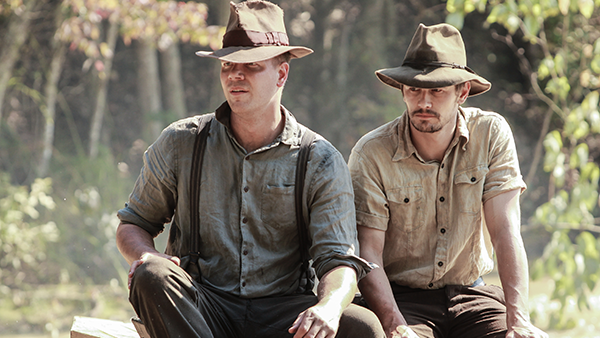
As I Lay Dying
In Jarmusch’s glamorous, hilarious homage to opiated romanticism, Only Lovers Left Alive, Tilda Swinton and Tom Hiddleston play enervated, hyper-elongated vampires who swoon and swan around as they make their connection in the picturesque ruins of Detroit and Tangiers, both largely re-created on sound stages and both substitutes for the memory of downtown New York in the Seventies. There’s even a tribute to Vivienne Dick’s She Had Her Gun All Ready. A delirium of nostalgia and Anglo-fetishism, it’s truly to die for.
The strongest films in the Certain Regard sidebar—Claire Denis’s The Bastards, Lav Diaz’s Norte, the End of History, Alain Guiraudie’s Stranger by the Lake, and James Franco’s As I Lay Dying—were at least on a par with the best of the Competition, although less calculated for commercial release in the art-film market. With Stranger by the Lake, Guiraudie, contemporary French cinema’s most underrated director, delivers a film that Hitchcock would have envied for its uncloseted expression of the crosscurrents of Eros, Thanatos, and morality. A mere four hours in length—short for this epic-inclined director—Norte, the End of History proves that Diaz unfailingly knows where to place the camera. And in As I Lay Dying, a subtle and engrossing adaptation of the Faulkner novel about a poor white Southern family’s odyssey to bury their dead matriarch, Franco lays to rest any doubts about either his filmmaking commitment or his talent.
Faulkner, a French favorite, is a reference point for Denis’s The Bastards, in which a shack done up as a rudimentary sex dungeon features a bunch of bloody corn cobs straight out of Sanctuary, the writer’s pulpiest novel. The more obvious source—made all too clear one evening by the appearance on the red carpet of Dominique Strauss-Kahn, the subject of an upcoming film by Abel Ferrara—is the widespread French sex-ring scandals involving men of wealth and power. The Bastards is Denis’s darkest film—visually, psychologically, emotionally. It is also the rarest of cinematic narratives: a completely contemporary film noir. The superb Vincent Lindon is positioned as the film’s moral and erotic center, a sea captain gone AWOL to come to the rescue of his estranged sister and his niece, but who is finally no match for forces of evil beyond his comprehension. Shooting digitally for the first time, Denis and her camerawoman Agnès Godard use the RED Epic to impart their trademark tactility to every image.
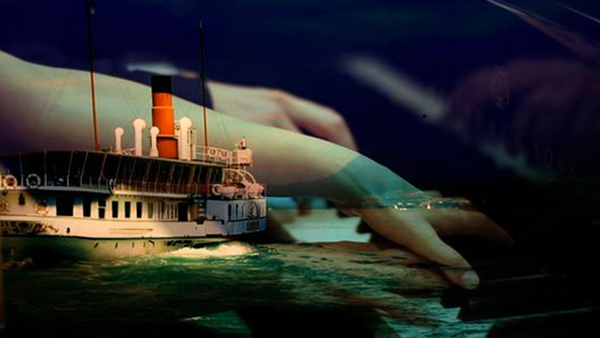
The Three Disasters
While the Certain Regard section did not lack for movies by female directors, none of them came close to The Bastards. Outside the official selection, however, there were two films by more than promising women filmmakers. Suzanne, which opened Critics’ Week, confirms the talent Katell Quillévéré showed in her debut feature, Love Like Poison, for depicting the chance meetings and events that take lives in unexpected directions. Here her subject is two sisters who are raised by a doting single father. Only 91 minutes long, every one of them rich with the quotidian details of provincial working-class life, the movie captures crucial stages in the lives of Suzanne and her adoring younger sister as they grow from irrepressible pre-schoolers into the adults that no one, including us, expected them to become. The Summer of Flying Fish, which played in the Directors’ Fortnight, is the enticing first fiction feature by accomplished Chilean documentarian Marcela Said. Set in what should be a vacation paradise, it charts the coming to consciousness of a teenage girl, who, in a single summer, has her first love affair and discovers another world—that of the Mapuche Indians, who have been displaced from their land by men like her wealthy, brutish, arrogant father. Guess whose side she’s on.
No surprise that the festival’s most brilliant movie was Jean-Luc Godard’s The Three Disasters, an 18-minute 3-D piece that unfortunately is embedded in the 3-D triptych 3x3D, the other two parts of which, by directors who shall remain nameless, are unwatchable. Largely a found-footage collage, it would be no different from the many short spin-offs from Histoire(s) du cinéma that Godard has made over the past 15 years, except that it is in 3-D as you have never seen it before—not as an enhancement or a novelty, but as a radically new medium that is overwhelmingly expressive and complicated in the meanings it makes. If we’re lucky, Godard, always a wily fellow, will find a way to liberate this masterpiece, the first movie of the cinematic future.



